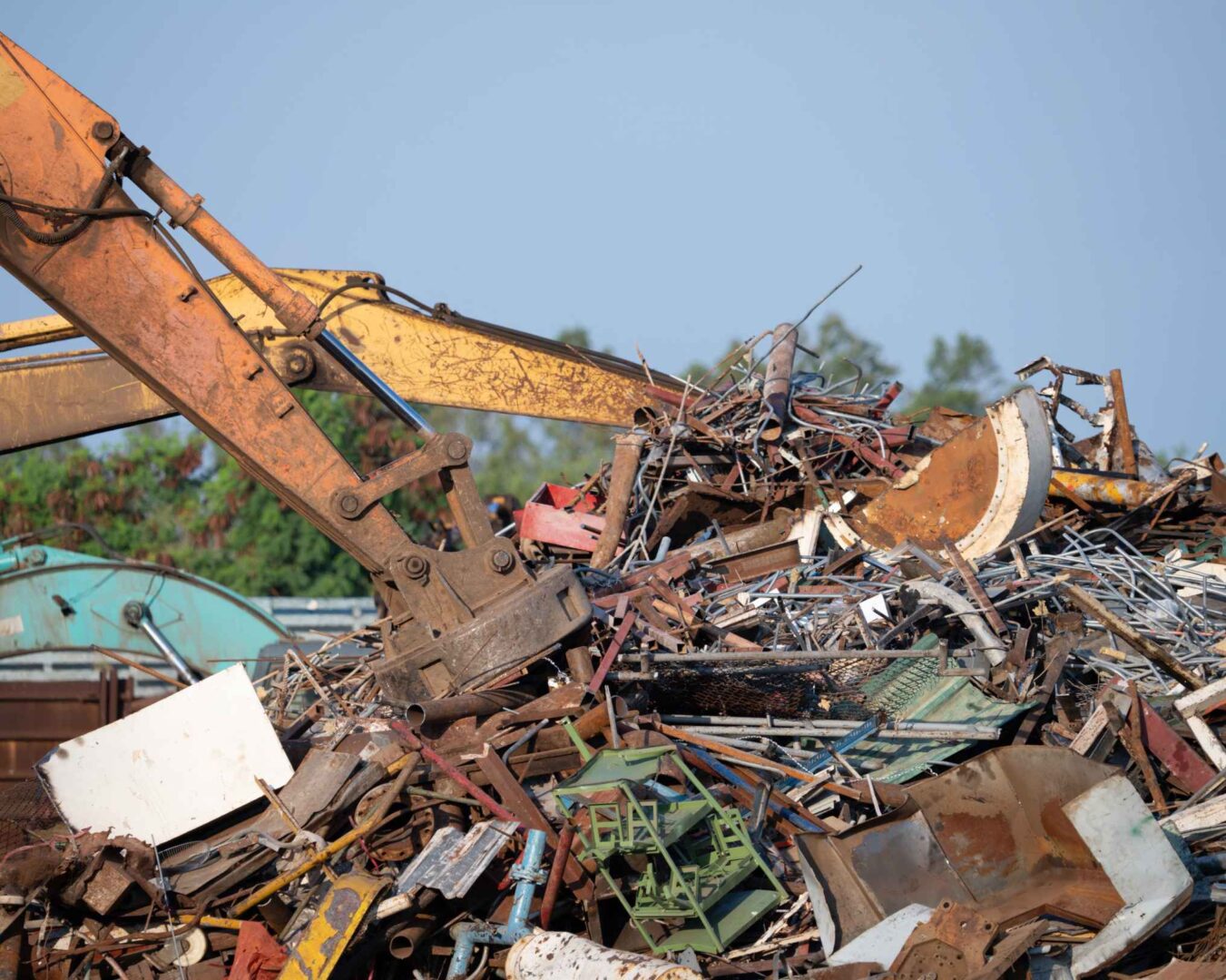The Amazon marketplace is booming, with sellers constantly striving to stay ahead in a dynamic environment. One critical aspect of maintaining business agility is understanding amazon inventory liquidation. It’s essential for sellers to know when and how to liquidate amazon inventory, ensuring they remain competitive and free from unwanted stock burdens.
Table of Contents
What is an Amazon Liquidation?
At its core, an Amazon liquidation is the process sellers employ to dispose of stock that’s no longer required. Whether the reason is overstocking, returns, or nearing expiration dates, sellers need to find ways to manage such items. This often involves turning to an inventory liquidator who helps liquidate inventory, transforming potential losses into recovered investments. It’s like the stock market, but for Amazon sellers.
What Is Amazon FBA Liquidation?
Diving deeper, Amazon FBA liquidation focuses specifically on sellers utilizing Amazon’s Fulfillment by Amazon (FBA) service. In FBA liquidation, these sellers, instead of handling the logistics themselves, rely on Amazon’s vast network. Through Amazon FBA liquidation, products stored in Amazon’s fulfillment centers are presented for liquidation, following certain guidelines and processes that Amazon fba liquidations entail.
How to Liquidate Amazon FBA Inventory?
Liquidating inventory through the FBA model might seem daunting, but in truth, it’s a streamlined procedure. First, you’ll need to navigate to your Amazon Seller Central account. From here, you can manage and initiate FBA liquidation requests. But always be conscious of the terms and conditions of amazon fba liquidation, ensuring you’re compliant and informed.
Here are some unique tips to liquidate Amazon inventory:
- Start by creating a liquidation strategy that includes regular product reviews and sales analysis. This will help you identify which products should be liquidated from your Amazon inventory.
- Take advantage of auction and pricing tools to list your inventory for sale, whether it’s through third-party sites or direct purchase options.
- Experiment with profit-boosting tactics like offering promotional discounts or bundle deals.
- Always analyze your liquidation performance regularly to assess the success of your strategies and make further decisions accordingly.
- Take advantage of Amazon’s simple restocking process, which allows you to quickly return unwanted items back into inventory if necessary.
- If inventory proves too challenging to manage, consider working with a professional liquidator to ensure the most profitable outcome.
- Use your success stories as a source of inspiration for future liquidations and don’t be afraid to take risks when it comes to turning inventory into profits.
Example
In 2018, Amazon started an FBA liquidation program called ‘Treasure Truck’. Through this program, sellers could acquire heavily discounted products from other Amazon sellers and resell them on their own platform for a higher profit. It’s a great way to liquidate inventory without relying solely on traditional channels.
With the right strategies and tools in place, you can easily transform potential losses into profitable investments. As long as you carefully review your sales performance and the terms of FBA liquidation, you’ll be able to make informed decisions and ultimately maximize profits.
How does Amazon FBA Liquidation Work?
Amazon’s system, once a liquidation request is initiated, facilitates the sale of your items to external liquidators. These liquidators then either resell the items or recycle them. This way, the products don’t just sit idly, accruing storage fees; they find a new purpose, reducing losses for the seller.
Amazon FBA Liquidation is not just a tool for clearing out unwanted inventory. It’s a hidden treasure chest that most sellers overlook. You’re saving on storage fees. This alone makes liquidation a worthwhile venture. Also, you’re networking. The liquidation process allows you to establish connections with liquidators and other sellers. And also, you’re contributing to a more sustainable supply chain. By liquidating, you prevent your unsold items from ending up in landfills.
Fees Involved In FBA Liquidation
It’s worth noting that while FBA liquidation can recover some costs, there are associated fees. Typically, these fees are a fraction of the item’s cost and vary based on the item’s size and weight. That said, Amazon refunds the associated fees as long as the liquidator is able to sell the item successfully.
It’s important to stay informed about any changes in amazon fba liquidation policies. Amazon is usually quite transparent with their processes and fees, so there should be no surprises when it comes time to initiate a liquidation request.
How to Liquidate Excess Inventory
Beyond the realm of Amazon, businesses often face challenges with excess inventory. It’s imperative to liquidate excess inventory efficiently to maintain a healthy cash flow. This is where the magic of beneficial reuse shines as a stellar solution to excess inventory liquidation. Instead of merely discarding or underselling products, consider the myriad ways they can be repurposed or donated to create positive ripples in the community and the environment.
For excess inventory, here are some ideas to liquidate efficiently.
- Donate products to shelters, charities and other non-profits in need of them. This can provide an opportunity for your business or brand to engage in meaningful social causes while responsibly liquidating excess inventory.
- Offer these items as incentives or bonuses to loyal customers or employees who are part of a loyalty program.
- Bundle multiple items together for sale at a discounted price. This will attract more buyers and help you move inventory faster.
- Consider launching secondhand or vintage product sales to boost revenue and reduce excess stock levels.
- Reach out to influencers, bloggers or other content creators in your space who could feature your products in their content as a form of advertising.
- Reach out to competitors and explore opportunities for trade-in agreements or cross-promotions to liquidate excess inventory.
- Utilize Amazon FBA Liquidation Services to quickly turn unsold items into cash, especially when dealing with fast-moving products with shorter shelf lives or seasonal trends that require quick turnaround time.
- Consider partner programs such as Amazon’s “Sell As A Service” which allows you to sell products on behalf of other companies and receive a commission for every sale.
- Connect with trade buyers who specialize in liquidation services and help them acquire goods from your excess inventory at a discounted price. This can be beneficial when dealing with large-scale liquidation projects.
- Look for alternative online marketplaces to help you reach a wider audience and move excess stock quickly and efficiently.
Best Way to Liquidate Amazon Inventory
When exploring methods to liquidate stock, beneficial reuse stands out as the gold standard. Why? It’s not just about clearing space; it’s about social responsibility, environmental conservation, and even possible financial incentives like tax write-offs.
Let’s talk about some of the reasons why beneficial reuse is a powerful tool to help you liquidate excess inventory.
- Benefit from Tax Write-Offs: When companies donate goods, they’re eligible for tax breaks under the provisions of Section 170(e)3 of the Internal Revenue Code. This means that businesses can write off donations up to twice the cost basis, as opposed to just selling them.
- Increase Brand Visibility: Participating in social causes and giving back to the community is a great way to increase visibility and build positive relationships with customers, suppliers, employees and other stakeholders.
- Establish Long-term Relationships: Donated items provide a platform for companies to connect with those they’ve helped on an emotional level. This can create opportunities for long-term loyalty and advocacy.
- Improve Internal Employee Engagement: When employees feel like their employer is doing good in the community, it boosts morale and encourages an environment of giving back and being part of something bigger than themselves.
- Make a Lasting Impact on the Environment: By donating unsold items to people in need, you’re essentially preventing them from entering the waste stream and contributing to the growing issue of pollution.
These are just a few of the many benefits associated with beneficial reuse. Whether it’s through Amazon FBA Liquidation or creative reuse projects, there are countless ways to turn excess inventory into something meaningful.
When Do You Need To Liquidate Amazon Inventory?
It’s not always clear-cut. The need can arise from seasonal stock changes, product updates, or unexpected market shifts. Always keep a vigilant eye on inventory turnover rates and market demands. As a rule of thumb, when you see stock piling up faster than you can sell it off, it’s time to start planning for liquidation.
Here are a few telltale signs that indicate it’s time to liquidate your Amazon inventory:
- Your product range is no longer selling as well as it used to.
- You’re unable to find buyers for certain items in your inventory.
- There’s an abundance of similar products available in the market at lower prices.
- Your listing has been penalized or your sales have been declining.
- You’re strapped for cash and need to free up some liquidity quickly.
Benefits Of Liquidating Inventory
Liquidating Amazon inventory isn’t just a reactive measure; it’s a proactive strategy. By reducing storage costs, you’re also freeing up capital. By donating, you’re enhancing your brand image and corporate responsibility. And with beneficial reuse, you’re championing sustainability and community upliftment.
Let’s talk about some of the lesser-known benefits that come with inventory liquidation.
- Employee Morale and Productivity: A cluttered warehouse or stockroom can be demotivating for employees. Clearing excess inventory can result in a better-organized workplace, potentially boosting employee morale and productivity.
- Quick Market Feedback: Liquidation sales can provide rapid feedback on product pricing, quality, and demand. This can be used to refine future products or marketing strategies.
- Strategic Partnerships: By liquidating inventory, a company may find partners, resellers, or bulk buyers they hadn’t previously considered. This could open the door for future collaborations.
- Tax Deductions: Donating unsellable inventory to charitable organizations can often lead to tax breaks. Make sure to check with local tax regulations and consult with a financial advisor.
- Product Life Cycle Management: Liquidating inventory helps businesses understand the shelf life of their products. If a product consistently ends up in the liquidation phase, it might not be viable for long-term production.
- Reduction in Insurance Costs: Lower inventory levels can reduce insurance premiums related to property and inventory coverage.
- Enhanced Inventory Turnover Ratio: Liquidating stagnant inventory can boost the inventory turnover ratio – a key performance indicator for retailers. A higher ratio indicates efficient inventory management.
- Opportunity for Brand Refresh: A liquidation sale can pave the way for introducing a new line of products, branding, or a refreshed marketing strategy. It can be a symbolic end to an old era and the start of something new.
- Enhancing Digital Presence: If liquidation is done online, it can attract more visitors to a company’s website or digital platform. This increased traffic can be leveraged for other marketing purposes or to introduce new products.
- Local Economy Boost: Local businesses or individuals can benefit from purchasing liquidated goods at lower prices. This can boost the local economy, especially if these goods are resold.
Introduction to Beneficial Reuse: A Revolution in Inventory Management
Beneficial reuse is not just a service; it’s a movement. We’re here to transform the way businesses perceive ‘unwanted’ stock. Through this practice, products get a renewed purpose, aligning with sustainability goals and reducing the strain on our planet.
Why Beneficial Reuse?
Consider the alternative: items end up in landfills, causing environmental harm. Beneficial reuse, on the other hand, reframes this narrative. It helps businesses reduce waste, save on disposal methods, and even secure significant tax write-offs, all while making a positive social impact.
Every piece of inventory tells a story. It isn’t merely merchandise, it holds potential. A child, who could become the next great innovator, waits to fill a school notebook with ideas. It’s a pair of shoes that could give someone the confidence to walk into a job interview. It’s a blanket that might offer warmth to a family during harsh winters.
Our Process in Beneficial Reuse
We pride ourselves on our efficient, transparent process:
- Identification of quality products heading to landfills.
- Matching these products with communities and initiatives that need them.
- Streamlining documentation, ensuring compliance, and availing tax benefits.
- Facilitating seamless pick-up and transportation.
Whether you’re a brand, retailer, distributor, manufacturer, or involved in waste management, Happen Ventures ensures your surplus inventory finds a meaningful place, fostering a circular economy.
Of course, there’s the financial angle—the saved disposal costs, the tax benefits. But more than that, there’s an intangible value. It’s in the smiles of children, the relief of struggling families, and the rejuvenation of communities.
Conclusion
People have long viewed liquidating Amazon inventory as a necessary but cumbersome process. Yet, with the introduction of beneficial reuse, the narrative is changing. This innovative approach isn’t merely about clearing space; it’s about reshaping business strategies to be more socially responsible, environmentally friendly, and financially savvy. Embrace the future; choose beneficial reuse. By choosing beneficial reuse, Amazon sellers aren’t just making a business decision; they’re taking a stand for a more empathetic, connected, and sustainable world. They’re challenging the traditional, linear narratives of consumption and waste, and embracing a circular vision where every item has value and purpose.




